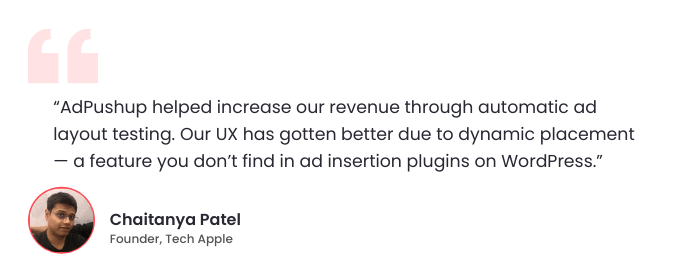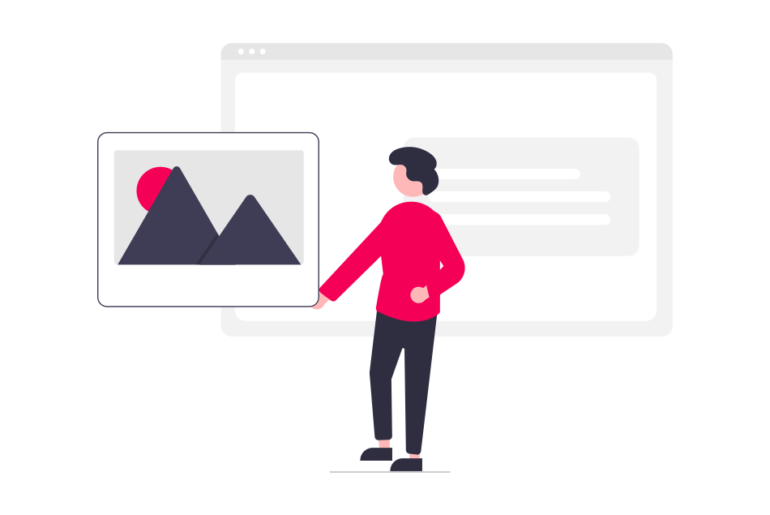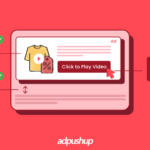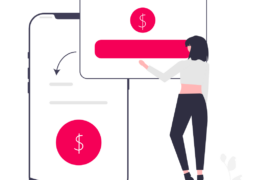Get a simplified guide to 300×250 ad banners, perfect for advertisers and publishers. Learn how these banners can boost your online presence effortlessly
Ad banners are an essential part of advertising because they help people find their way around the internet by gently drawing their attention to relevant products. As the digital world changes, these ad banners will still be practical and cost-effective, and they will continue to be a crucial part of many successful online advertising campaigns.
At the same time, they also help publishers monetize their ad inventory as it also attracts advertisers looking for such ad spaces.
The 300×250 ads are one of the most common ad banners for online ads because they work well and can adapt to websites easily.
Even though it’s only 300 pixels wide and 250 pixels tall, this simple rectangle can help you get your message across to the right people.
Today, we will focus on the 300 x 250 Medium Rectangle Ad Banner, showing you what it can do and how it can be an essential tool for your digital marketing arsenal.
What are 300×250 ads?
The 300 x 250 Medium Rectangle Ad Banner is a popular and versatile digital advertising format. It has fixed dimensions of 300 pixels in width and 250 pixels in height.
This banner typically falls within the category of display advertising, making it distinct from other ad formats, such as skyscrapers or leaderboard banners.
Specifications of 300×250 Ads
- Width: 300 pixels
- Height: 250 pixels
- File formats: JPEG, PNG, GIF, HTML5, or other standard web formats
- File size: Usually limited to a few hundred kilobytes to ensure fast loading times
- Aspect ratio: 6:5, making it a relatively square-shaped ad banner
Common Usage of 300×250 Ads Across Websites and Platforms
The 300×250 ads are a highly prevalent ad size used across a wide range of websites, platforms, and digital advertising campaigns. Some of the common use cases include:

Websites
This ad banner is commonly found on the sidebars, within content, or at the bottom of web pages. It seamlessly fits into various website layouts, making it a preferred choice for publishers and advertisers.
Blogs
Many bloggers incorporate 300×250 ads into their content, making it a lucrative choice for monetizing blogs. It can be strategically placed within articles, enhancing user engagement without being overly intrusive.
E-commerce sites
Online retailers use 300×250 ads for promoting products, special offers, and related items on product pages or in shopping cart sections.
Social media
Some social media platforms support this ad size for sponsored posts, allowing advertisers to reach a broader audience with visually appealing content.
Mobile apps
In mobile advertising, this size is also adapted to fit various mobile app layouts, offering ample space for compelling visuals and messages.
Benefits of Using 300×250 Banner Size
The 300×250 ads offer several advantages for advertisers:
Versatility
Its square-ish dimensions make it adaptable to a wide range of advertising placements, making it suitable for both desktop and mobile experiences.
Cost-Efficiency
Creating ad creatives for this size is often more cost-effective compared to custom sizes. Advertisers can reuse and repurpose their creatives on multiple platforms.
Engagement
Its size allows for eye-catching visuals and ample space for compelling ad copy, leading to increased user engagement and click-through rates.
Integration
It seamlessly integrates with various content formats and website designs, ensuring a non-disruptive user experience.
Compatibility
300×250 banner size is widely supported across advertising networks, making it easy for advertisers to distribute their campaigns to a broad audience.
Tips for Creating Effective 300×250 Ads Banner
Creating effective 300×250 ads involves a combination of design and psychology. Here are some tips to help you craft compelling banners:
- Keep It Simple: Avoid clutter. Minimalist designs often perform better as they are easier to digest and remember.
- Strong Call-to-Action (CTA): Your CTA should be clear, actionable, and create a sense of urgency. Use action words like “Buy Now,” “Get Started,” or “Learn More.”
- Mobile Optimization: Ensure your banner is responsive and looks great on mobile devices. Mobile users make up a significant portion of online traffic.
- Animation and Motion: Subtle animations or motion can draw attention without being overly distracting. However, be mindful not to overdo it, as it may become annoying.
- Color Psychology: Use colors that resonate with your brand and evoke the right emotions. Different colors can convey trust, excitement, or calmness.
- A/B Testing: Regularly test different banner designs to determine which one performs best with your audience. Minor design changes can have a significant impact.
Examples of Successful Medium Rectangle Banners (300×250 Ads)
Amazon
Amazon often uses 300×250 ads to promote specific products with high-quality images and clear, concise copy. Their banners typically feature a prominent “Add to Cart” button, making it easy for users to take action.
Spotify
Spotify’s banners are known for their creative use of graphics and animations. They often feature music artists and playlists, enticing users to click and explore the platform.
Apple
Apple’s ad banners are minimalist, sleek, and highly effective. They focus on showcasing the product with high-resolution images and a simple CTA, such as “Shop Now.”
Booking.com
Booking.com frequently uses Medium Rectangle banners to display hotel and travel deals. They incorporate urgency by showing the number of rooms left, compelling users to book quickly.
Key Performance Indicators (KPIs) for 300X250 Ads Banner Campaigns
In the world of digital advertising, measuring the effectiveness of 300×250 ad campaigns is crucial for making informed decisions and achieving your marketing goals. Here are some key performance indicators (KPIs) to consider:
Click-Through Rate (CTR)
CTR measures the percentage of users who click on your ad when they see it. A higher CTR indicates that your ad is compelling and relevant to your target audience.
Conversion Rate
Conversion rate tracks the percentage of users who take a desired action after clicking on your ad, such as making a purchase, signing up for a newsletter, or filling out a contact form.
Return on Investment (ROI)
ROI measures the profitability of your ad campaign. It takes into account the costs of advertising and the revenue generated as a result of the campaign. A positive ROI is a clear sign of a successful campaign.
Impressions
The number of times your ad is displayed to users is called ad impressions. High impressions can signify brand visibility, but it’s crucial to balance this with other KPIs.
Cost Per Click (CPC) and Cost Per Conversion (CPA)
These metrics help you understand how efficiently your campaign is using your budget. Lower CPC and CPA values indicate cost-effective advertising.
Bounce Rate
Bounce rate measures the percentage of users who visit your landing page but leave without engaging further. A lower bounce rate suggests that your landing page is relevant and engaging.
Viewability
Viewability tracks how often your ad banner is in the user’s viewable area. A higher ad viewability percentage ensures that your ad is seen by more users.
Engagement Metrics
Depending on your campaign goals, you may also want to track engagement metrics like time spent on the landing page, video views, or social media shares.
Making Data-Driven Optimizations for 300X250 Ads
Armed with the insights from data analysis, you can now make data-driven optimizations to improve the effectiveness of your 300X250 ads banner campaign. Not just this particular ad format, but this can apply to multiple ad formats out there:
Creative Tweaks
Adjust the ad banner’s design, copy, and visuals based on what the data tells you about user preferences and engagement.
Targeting Refinement
Refine your audience targeting based on the segments that show the highest conversion rates and engagement.
Budget Allocation
Allocate your budget more effectively by investing in strategies and channels that yield the best results.
Landing Page Optimization
Make changes to your landing page to reduce bounce rates and increase conversion rates.
Scaling Successful Elements
If some aspects of your campaign are performing exceptionally well, consider expanding on them.
Iterative Testing
Continue to test and refine your ad banner campaign over time. Digital advertising is dynamic, and ongoing optimization is critical to long-term success.
The Bottom Line
In today’s digital advertising industry, it’s fascinating to observe how the 300×250 ads have maintained their firm footing as a prevalent format.
This rectangular gem, with its ability to seamlessly adapt to both desktop and mobile devices, proves its tenacity and relevance. As long as the internet and its countless platforms exist, there will always be a corner for these trusty ad banners within digital marketing strategies.
To keep the Medium Rectangle Ad Banner in step with the times, marketers are urged to explore technologies and trends like programmatic advertising and interactive elements. By doing so, this format can not only stay effective but also continue to captivate audiences.
In the meantime, it’s time for you to seize the opportunity. Put the strategies, best practices, and tips discussed here into action within your advertising campaigns. Engage in a continuous cycle of testing, iterating, and refining your approach to fully harness the potential of the 300 x 250 Medium Rectangle Ad Banner.
Frequently Asked Questions – 300×250 Ads
The ad size 300×250 refers to a rectangular banner ad format with dimensions of 300 pixels in width and 250 pixels in height. This format is commonly used in digital advertising and is known as the “300 x 250 Medium Rectangle.”
300×250 MREC” stands for “300 x 250 Medium Rectangle.” It is a popular ad banner size used in digital advertising. MREC is an abbreviation for Medium Rectangle and is often used as a shorthand reference to this specific ad format.
The IAB (Interactive Advertising Bureau) Medium Rectangle with dimensions 300×250 is a standardized ad size used in digital advertising. The IAB sets industry standards for ad formats and guidelines, and the 300×250 Medium Rectangle is one of the IAB’s standard ad sizes. This format is widely recognized and utilized across various advertising platforms and websites, providing consistency in ad placement and design.

Nidhi Mahajan is a content author with a remarkable talent for ad tech. With a deep understanding of the ad tech industry and a sharp focus on detail, she excels in crafting insightful articles and compelling narratives. Nidhi is dedicated to making the complexities of ad tech more accessible to all through her clear and informative writing.







